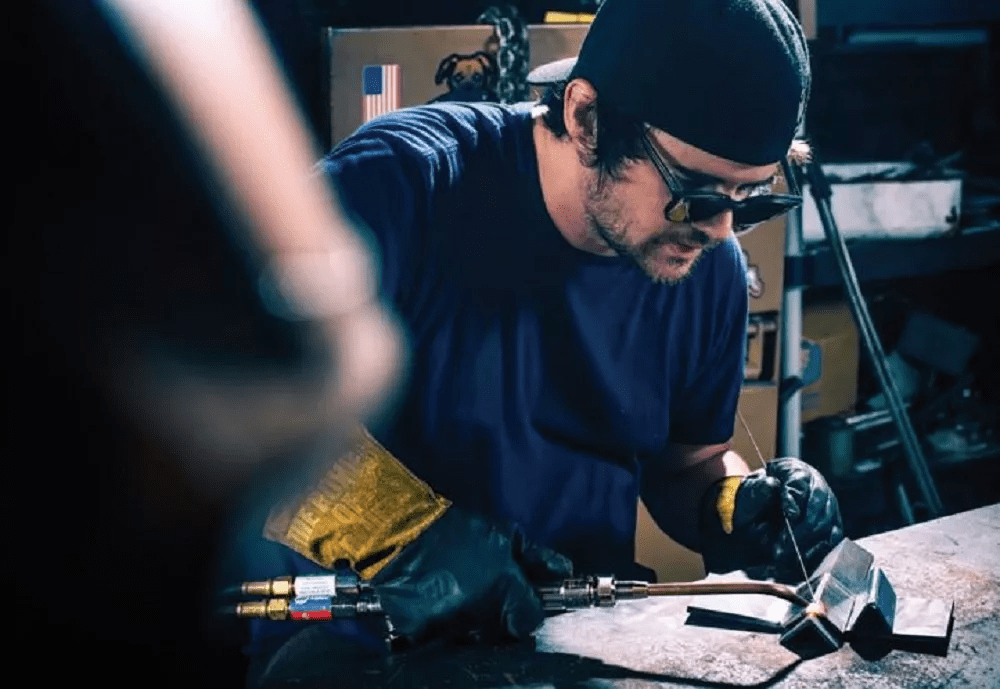Captain America, amid an otherworldly onslaught, has hope. While in the middle of an impossible battle for the soul of planet Earth, he knows he has a ringer.
“Dr. Banner, now might be a good time for you to get angry,” Captain America said.
“That’s my secret, Captain: I’m always angry.”
Bruce then turns toward the hordes of attacking aliens and transforms into the Hulk, a massive, beastly, unkillable agent of chaos; a green monster so powerful it needs to be written out of some comic book stories just so the outcome isn’t a foregone conclusion. As the Hulk single-handedly demolishes a gargantuan metal space dragon in the streets of New York City, we know we have a chance.
Early on the Avengers try to use Hulk as a tool, but mainly in a “break glass in case of emergency” kind of way because even when they’re on the same page as him, the collateral damage is steep. He doesn’t lose, but he’s also dangerous AF.
What does any of this have to do with welding?
I was thinking about acetylene. Much like the Hulk, the potent gas’s origin story begins with a scientist and an accident. In 1836 Edmund Davy created a dark substance—potassium carbide—that reacted violently with water, producing a gas (acetylene) that burned brighter than anything known to man up until that point. Eventually mistakes by other scientists in the mid to late 1800s led to another murky dark matter—calcium carbide—which was a commercially viable source of acetylene. Automobile headlamps, lighthouses, and buoys were the early adopters of the gas as a combustible source for light. Inventions to conserve the gas, to burn it more efficiently, meant that even a remote lighthouse could re-up just once a year with enough fuel to last until the next visit.
Of course, there’s no such thing as a free lunch. Acetylene is insanely powerful but isn’t an easy-on-the-eyes, morally unimpeachable superhero like Argon or Captain America. Acetylene smashes and explodes in fits of rage if not treated carefully. While mild-mannered Dr. Bruce Banner turns into a violent singularity when stressors spike his adrenaline, acetylene violently decomposes when too much pressure is introduced to it. No, both the Hulk and acetylene are antiheroes, gritty superpowers who want to do good yet can’t walk this earth without leaving a wake of collateral damage. The trick is to minimize the bad and maximize the good.
Early acetylene producers struggled to transport the gas without the vessels blowing sky-high when jostled. But with so much potential power for good, they had to make it work. Rather than storing and shipping acetylene in simple high-pressure containers (as liquid oxygen and carbon dioxide are still moved today), some smart people developed a new kind of container. Through trial and error and industrial plant-destroying detonations, they finally came up with a steel bottle filled with a highly porous mass, soaked in acetone, containing the acetylene within a stable, dissolved form. When the bottle is opened, the change in pressure evacuates the acetylene in its gaseous form!
As acetylene gained popularity, scientists worldwide worked on new ways to take advantage of its unique properties. Several of them found that acetylene burned at more than 6,000 degrees F when introduced to pure oxygen. In 1899, while John Harris researched manufacturing synthetic rubies, he cut through a steel backing plate by mistake with the flame, discovering the world’s first flame-cutting torch. That mistake was a game-changer as steel manufacturing and fabrication were in their infancy, and cutting and joining metal was an insanely tedious process. A flame hot enough to slice steel changed things quickly.
Read more: Playing with Fire: Dissecting the Hulk-like beast that is oxyacetylene in the fab shop






